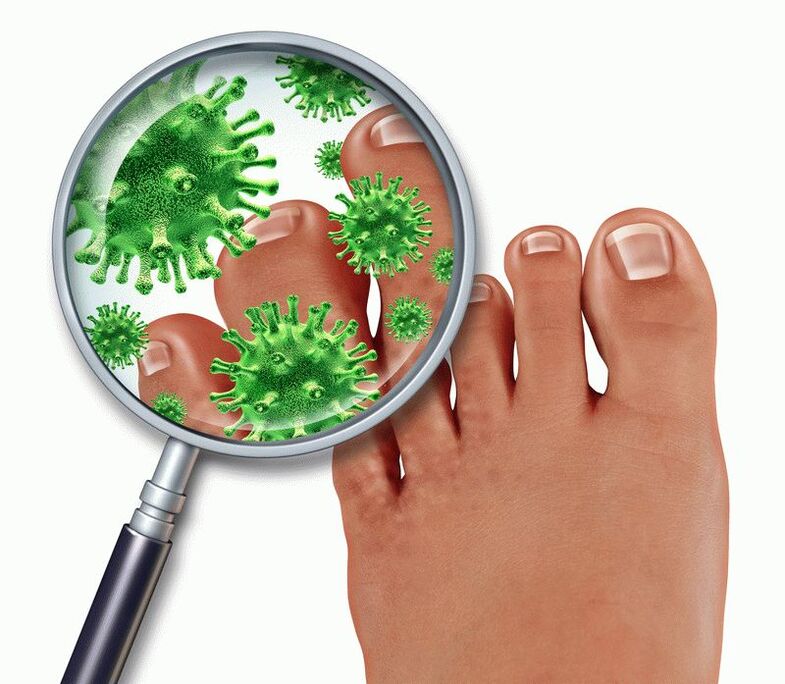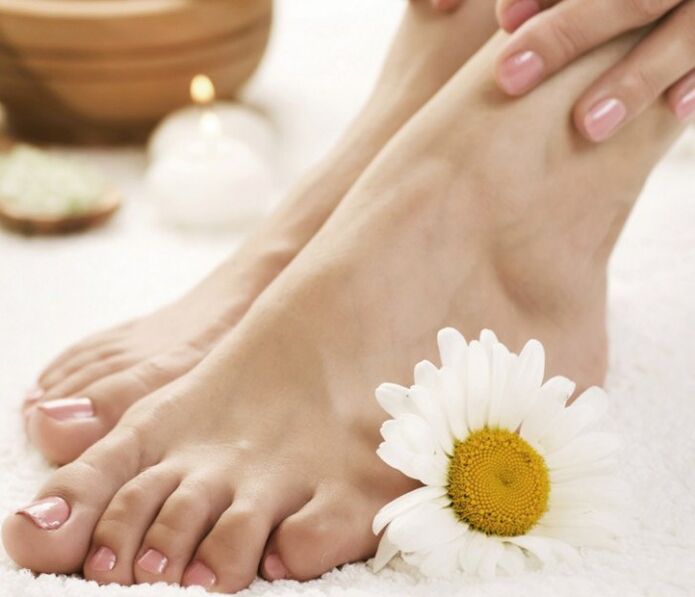Fungal diseases are not pleasant for any person. But the main problem is that anyone can be infected. More often, the causative agent of mycosis "lives" in public places: baths, gyms, health centers, beauty salons. They are dangerous even for those who lead a healthy lifestyle. Therefore, the question "how to get rid of fungus on the feet" is relevant for many people who have faced this unpleasant problem and encountered the following symptoms:
- cracks in the skin of the feet and between the toes;
- peeling skin on feet and heels;
- burning and itching of the feet;
- redness or yellowing on the feet, toes;
- thickening of the skin of the feet;
- looks unhealthy or shiny on the skin;
- foam with liquid.
Nail plates are also affected. Pain appears, nail melting occurs. The color of the plate often changes and is yellow, brown and even greenish. In general, these are the main signs of the development of fungal diseases. Different types of mycosis have their own symptoms, so it is useful to get acquainted with the features of its form.

Types of fungus on the feet
The type of mycosis depends on the pathogen. Fungal lesions provoke mold, yeast microorganisms, dermatophytes. They lead to the development of various forms of mycosis.
Rubrophytia
This disease is also called rubromycosis. It is characterized by exfoliation and dryness. How to diagnose the disease? The first signs are severe burning, itching and damage to the nail plate. Symptoms appear already in the last stages, so for a long time you can not guess about mycosis. Among the symptoms of the disease are also: the formation in the form of bubbles on the soles of the feet, plaques, pustules. With severe damage, a person feels pain while walking.
Important! This type of fungus is very easy to pick. Adequate contact with infected people. People with weak immune systems and excessive sweating are also at risk.
Candidiasis of the feet
A less common type of mycosis is caused by the fungus Candida. These pathogens live in the body of any person, but show their activity due to various factors: stress, overwork, hypothermia, etc. Injuries, wearing tight shoes also affect. This increases the chances of getting the fungus.
The disease is characterized by the following symptoms:
- hyperemia;
- severe swelling;
- small blisters on the toes;
- pustula;
- thickening of the stratum corneum;
- peeling between the toes, etc.
Foot candidiasis also has two forms: hyperkeratotic and large-umbilical. Different diseases have their own symptoms.
Onychomycosis
The disease is more concentrated on the nails. In the first stage, the pathogen affects the skin of the feet, causing unbearable itching. Small scratches and cracks appear in the area. Shortly after this, microorganisms penetrate the nail and begin to actively multiply.
There are three types of onychomycosis: normotrophic, hypertrophic, and onycholytic. The disease is characterized by changes in the color and thickness of the nail, its gradual separation from the bed.
How to cure foot fungus
Doctors strongly recommend treating foot and nail mycoses in the complex after a thorough diagnosis. Examination will allow you to determine the exact nature of the pathogen and create a competent treatment regimen. Usually, varnishes, lotions, antifungal sprays are used to get rid of this problem. They do a good job of getting rid of fungus between the toes, heels and feet in general. To cure chronic nail fungus, oral medications are often prescribed and surgical methods are also used. It is good to get rid of dermatophytes with thermal and laser methods.

Doctors who treat nail fungus
Mycoses of nails and feet are a fairly complex disease. They are difficult to treat, especially in advanced form. So be sure to contact your doctor. Dermatologists deal with the treatment of fungal diseases. He prescribes the necessary tests, determines the nature of the lesion accurately and makes the most effective treatment individually for each patient.
How to wash your socks properly
Many people wonder why the treatment of fungal diseases is not effective. In fact, conventional therapy is not enough. You should also wash your socks properly, as there are fungal spores on them. You can do it by hand or in the washing machine. At what temperature? At least 60 °. In such water, microorganisms lose their vital activity.
Keep in mind that it is better to approach the treatment of mycosis comprehensively. Taking medicine or ointment alone will not help, as treating socks with nail fungus is also very important.
In addition, proper shoe care plays an important role. It also accumulates microorganisms that can interfere with the normal course of treatment. The best option is treatment with an ultraviolet dryer. This device destroys pathogenic microorganisms and does not give them a chance to infect someone again.
















